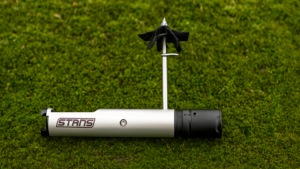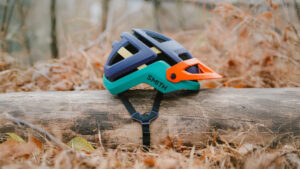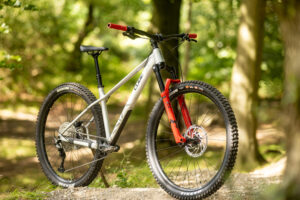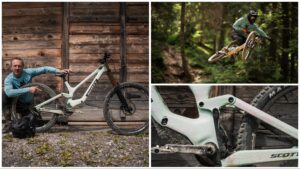RockShox has reduced friction and lightened the damping on its latest Zeb Ultimate to make it the best hard-hitting enduro/e-bike fork on the market.
I’ve tested stacks of long-travel enduro forks, and I think RockShox’s latest Zeb Ultimate Charger 3.1 is as close to suspension perfection as you can get
What RockShox used to call the Totem many moons ago became the Zeb when this 38mm stanchioned fork launched a few years back and inherited the brand’s leading longest-travel single crown title. Now the Zeb has had its biggest update since its inception in 2020, in an effort to become one of the best suspension forks on the market.
RockShox Zeb Ultimate need to know
- Hard hitting fork intended for enduro bikes and e-bikes
- 38mm chassis
- Charger 3.1 damper has a lighter tune, meaning that more riders should be able to start with the compression damping in the middle/neutral setting
- Broader range of adjustment for high and low-speed compression
- All-new bushing package said to reduce friction
- Aftermarket shim tuning kits are also available
While the Totem harks back to the days of freeride and hucking off cliffs, Zeb mostly targets hard-hitting enduro riders looking for ultimate single-crown stiffness. Its sturdy package is offered with 150-190mm travel to handle hectic DH riding or the extra forces and loads produced by battery powered e-bikes, where system weights can total 150Kg with really big riders behind the handlebars.
That’s not to say RockShox sponsored athletes haven’t been leaping off cliffs at events like Rampage on the super-stiff fork, and benefitting from the ability to chuck in a bar-spin while they’re at it, but Zeb is really all about speed and control for aggressive enduro trails and charging downhill tracks in as serious terrain as you could hit up before needing double-crown DH forks.

The Charger damper gets a major overhaul, and the results are impressive.
I’ve never had any complaints about the stiffness of Zeb, nor have I heard any other riders moaning about it, so RockShox’s significant revisions for MY25 are all about damping and bump response, rather than bolstering chassis integrity. This sees a new 3.1 generation Charger RC2 damper inside the right leg, that’s based on last year’s IFP (Internal Floating Piston) design but with tweaked damping tunes. Alongside the new damper architecture, RockShox has also worked on the Zeb’s bushings so that upper stanchions (those 38mm bits) can slide more freely in and out of the cast magnesium lowers.
The brand’s newer technologies – like vibration-damping ‘ButterCups’ and the self-balancing Debonair+ air spring – remain unchanged, as does the familiar way of tuning the spring curve via plastic volume spacers you drop in the air spring to increase progressivity and end-stroke ramp up.
While this fork might look very much like the previous generation, under the blood-red hood those considerable changes aim to make it work better for a broader range of rider weights and riding abilities. I’m well aware every brand says their products get better every year, so does RockShox’s latest Zeb deliver where you need it most – pushing the limits of safety and control downhill or racing enduro at the highest level?

Buttercups are rubber bushings that isolate the damping and air-spring shafts from the chassis. Everything helps, right?
Design and specification
While the Zeb chassis remains almost structurally identical, and the previous generational shift to RockShox’s Charger 3 damper across all its most expensive forks remains, there are still a few significant updates inside aiming at reduced friction and superior damping range.

On the left is the Charger damper disassembled, with the IFP spring and base valve clearly visible. On the right is a Buttercup with the rubber puck visible at the end of the shaft.
Charger 3.1 retains a spring-backed Internal Floating Piston design (rather than the expanding sealed bladder of previous Chargers) and also the vibration-reducing ButterCups at the base of the fork that aim to quieten feedback to the damper and air-spring shafts. One of the main advantages with this IFP design is better isolating low and high-speed compression circuits, and you can read all about the technology in our MY23 RockShox Zeb Charger 3 overview here, so I won’t repeat it all again.

A bolt-on mudguard is available, and the air pressure relief valves can be found at the back of the lowers, although they need to be unscrewed now, rather than depressed.
The new Charger 3.1 builds on the basic damper architecture while tweaking a few components and design aspects based on feedback from RockShox athletes, journalists, and bike brands. That boils down to a headline reduction in overall damping levels, as well as an extended range of effective tuning on the (newly-knurled) indexed external adjusters.

The HSC and LSC adjusters come set in the middle, then add or subtract (increase or decrease) damping from the mid point.
All these changes mean you shouldn’t need to be running your fork damper fully open (according to RockShox, you shouldn’t have been before either, but in my experience many riders were) and Charger 3.1 is designed and optimised with the middle (12 o’clock) settings on the two-tiered dial on top of the fork leg as the starting point for any adjustments.
Lighter damping overall means many more riders should find themselves in the middle of the range on both compression and rebound, and this was the case for me too, going from a maximum of one or two clicks of compression on the older fork to three clicks of high-speed and five or six clicks of low-speed damping here.

Those bleed ports let you release excess air pressure that builds up as the damper gets hot on long descents.
RockShox has achieved this by redesigning the way damper fluid moves through the low-speed compression circuit to make the oil path flow even easier and also allowing more oil to flow through the LSC when the adjuster is set to open. A very specific 68% more in fact, according to the brand, and having less compression damping should improve comfort, traction and control to mute low-speed trail buzz and vibration, which from my first ride, I found pretty evident out on the trails.
RockShox’s fastest World Cup racers also requested more high-speed damping for extra support and bump absorption on the roughest tracks, so engineers also increased the size of the high-speed compression pyramid (shim stack) for extra damping force when the HSC adjuster is closed. This means you can dial backwards from very damped indeed, to the exact amount of support you need. Every click is noticeable and all settings are useable too.
The damping range is a fair chunk lighter than before on the rebound circuit too, so will suit lighter riders (and some very fast riders too) who I heard complaining about the overly-damped and excessively slow rebound range on the previous generation fork, many of whom were running the Zeb close to fully open.

Another shot of the Buttercups bushing that’s designed to reduce high-frequency trail chatter.
If standard Zeb settings don’t suit out of the box, there are also two extra compression and three rebound tunes available to customize the 3.1 damper further, but I’d only imagine this as an ultimate tweaker or top-level racer option, as the stock adjustment range works so well it should be broad enough for nearly everyone.
Other details also updated on the MY25 Zeb include a new, stiffer internal floating piston coil spring. This pushes back against the oil that gets displaced as the damper changes direction to resist cavitation over time (tiny, foamy air bubbles can build up and affect performance) and, being stiffer, it better matches the increased oil flow throughout the system to ‘boost consistency and control’. There’s also an all-new mid-valve check spring, which is a vital little component that holds the valve closed before there is a movement on the damper shaft.

That blood red colourway option on the Ultimate looks amazing.
Finally – and perhaps one of the most important updates that RockShox is a bit vague about in the PR – extra work has been done to ensure the bushings (that prevent play between the upper telescoping legs and the magnesium lowers that hold your wheel and the disc brake) are super smooth to allow up and down movement to be as free as possible.

Inside a Charger 3 damper showing the LSC oil flow housing (the beige part with the chrome end). This is now larger on the 3.1 to allow more oil flow.
This all-new bushing package has ‘new production specs for lower leg reaming, alongside new bushing sizing requirements, resulting in the lowest possible friction for an overall improved system’. With quite a few previous generation Zebs proving excessive stiff and sticky – unless they had their bushings sized after purchase – this update is especially welcome. Both sets of new Ultimate Zebs we had in so far for testing have felt so smooth off the top, that a one finger push on the handlebars eases them into the travel and overcomes any breakaway friction.
As well as the damper tunes mentioned, the new 3.1 damper itself and the latest Debonair+ air spring are available as upgrades and will drop directly into older Zebs. A whole new damper will cost £386, but you can upgrade Charger 3 to Charger 3.1 with a piston kit which is just £72. Shim tuning kits are £29.

The old Charger 3 compression adjuster is virtually identical to the new Charger 3.1 version.
Performance – How it rides
The first time I used this new fork was at BikePark Wales where I figured the best way to put it through its paces was a direct comparison with a fully bedded-in Zeb MY24 from last year. The older Zeb had been ridden in the mountains of Italy for a week and was completely dialled in to my preferred settings and air pressure, and about as good as I could get it from stock.
I set about doing a few laps to get my eye in before heading back up the hill and repeating the same tracks on the new Charger 3.1 model. What was immediately noticeable with the new Zeb was the extra sensitivity and grip from the first few bumps, and also that I could get the new fork to feel better than the previous one right from the off based on just a quick bounce about in the car park. I’m very experienced testing forks, so I can usually short track to the optimal settings pretty quickly, but to be feeling so good straight out of the box after just one run was really impressive.
My observations aren’t unique, either. MBR’s Editor Danny Milner reported having the exact same experience, where his new Zeb Ultimate felt ‘simply great’ from his very first go run. Danny added that he prefers it to the new Fox 38 GripX damper, that feels ‘over-damped’ and harsh. At 85kg, I’m a fair chunk heavier than Mr Milner and yet to get hold of the GripX to directly compare it and corroborate his experiences.

The silver cone is the HSC Pyramid – this is larger in the 3.1 damper, which restricts more oil when closed, increasing damping. Above it is the LSC flow housing, which is more free-flowing in the open position.
What’s even more of a result with the latest Charger 3.1 Zeb is that extracting ultimate performance rarely came this quickly on the last generation. Older forks often needed hammering for days before they felt free and bedded in. My experience is of putting in days of full-throttle Alpine descending to get the fatter stanchions sliding freely into some Zeb lowers, and I’ve also seen first-hand what a difference reaming tight bushings can make on the stickiest forks.
Another big part of set-up ease here is that RockShox’s air recommendations are pretty accurate, and with less damping overall, it’s simple for anyone to find a workable setting that will give good performance. On this new model, it’s more a case of simply dialling in your sweet spot, rather than always searching for more softness and sensitivity. With all the compression settings useable, sweeping through the entire range really changes the feel of the fork, but it still always ‘works’ well and every setting is rideable. This is a big plus, as it means it’s nearly impossible to get it wrong. Add turn the dials to the right (clockwise) and the fork sits up in its travel and adds a stack of support while still remaining sensitive. Sweep them to the left (anti-clockwise) and you get a more comfortable, less hectic ride with larger chassis movement. You might have to look closely at the dials to see where they are in relation to each other, but it’s still simpler than counting clicks into double figures.

RockShox Zeb Ultimate MY25
When I was descending really fast and things got hectic, the Zeb cycled rapidly, but it never felt out of control or bobbed my head and body too much. Plus there’s was always support there to push into when pulling off a lip or I wanted to pop the bike over a root web or rockstep.
Of all the changes here, the main one I could feel immediately was the increase in sensitivity and fluidity. The minimal friction in the system is apparent even riding along flat, relatively smooth, off-road gravel paths, where the Zeb Ultimate wants to track every single little stone, ripple and bump, and this isolating feeling made it feel incredible smooth at my hands when things get rougher, even when pumped up quite firm.

The RockShox Zeb Ultimate is a handsome fork, and it rides even better than it looks.
RockShox doesn’t go into any detail as to how or if they have tweaked the air spring curve or the size of respective positive/negative air chambers, but to me this fork definitely has shades of one of my all-time favourites – the old red RockShox Lyrik RC2 fork from around 2019/20. This super-supple fork was very popular with all of us here at MBR before RockShox fiddled with the air spring to make it ‘less sucked into the travel’ to appease big brands like Trek and Specialized, who didn’t like the fact that this effectively turned a 160mm fork into a 150mm fork. As I suspect many others will be, I’m happy to see this ultra-comfortable, hyperactive and grippy feel return. This new Zeb is so supple, it’s arguably the smoothest long travel fat-legged fork I’ve ever used, and I’ve ridden pretty much everything from Fox, RockShox, Ohlins, Suntour, and DVO.

The Öhlins RXF 38 M.2 is tricky to set up and not as sensitive as the new Zeb.
Compared directly to leading rivals like the Öhlins RXF 38 M2 and the Fox 38 Grip2, RockShox’s feel is the liveliest with a marginally faster response and more delicate touch on the ground. The totally-dialled Fox sits in the middle in terms of action and control, and the Öhlins is the calmest, most glued to the floor and slurpy. This is purely subjective, but I reckon you can equate this to the off-the-top sensitivit,y where I’d now give RockShox Charger 3.1 the nod slightly, with Fox (Grip2) not far behind. However, Fox has moved the goalposts this year with Grip X and Grip X2, and from talking to Danny (who’s ridden both new dampers a lot), the changes have added support while sacrificing comfort, meaning more feedback to palms and more fatigue in arms.
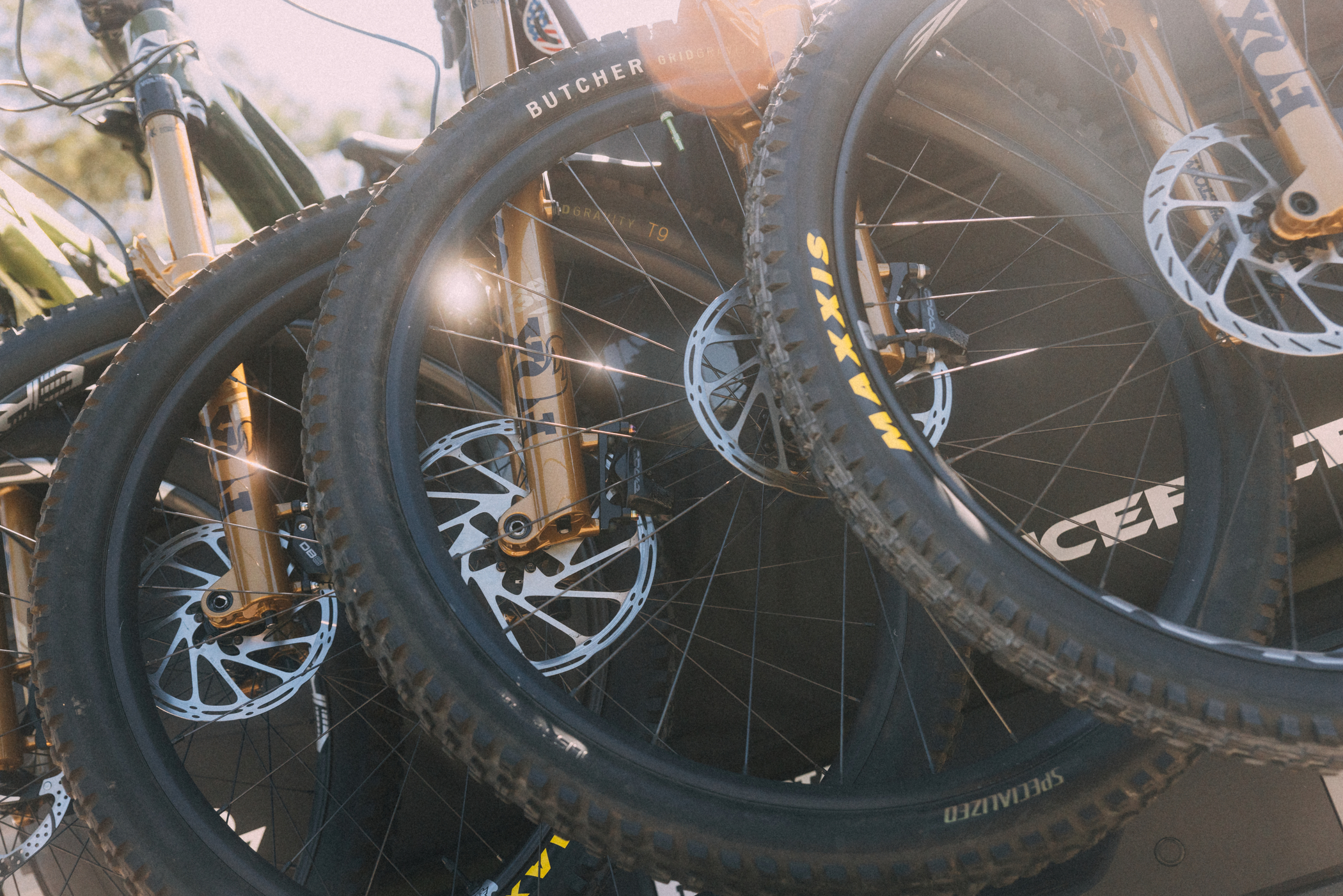
Fox has also tried to add support without adding harshness on its new Grip X and Grip X2 damper platforms, but so far RockShox has done the better job.
In contrast, Zeb will save your hands and forearms on mammoth descents by erasing extra buzz and vibration, alongside an incredible amount of grip, so the tyre can really track tiny bumps and edges at lean angles when turning hard on uneven surfaces. This effect is even more than the previous generation fork and might just save your bacon if you are right at the limit.
The only thing RockShox’s latest and, I think, greatest fork possibly gives up to the competition are occasional moments where it can feel a bit springy. When I was really charging though the worst/roughest sections, or messed up my body weight on a deep landing, the rebound can feel momentarily less controlled than Fox’s older Grip2 damper. That’s my only minor criticism, making RockShox’s Zeb Ultimate about as close as it gets to fork perfection when fitted to any top enduro or e-bike.
Verdict
One of the market-leading 38mm stanchioned forks just got even better. With Charger 3.1, RockShox’s stiff and precise Zeb is both smoother off-the-top and more responsive when absorbing repeated hits than previously, but it hasn’t given up any of its support and control when things get really hectic. The revised bushings and lighter damping tune make it more sensitive than ever, and I reckon grip and tracking as about as good as it currently gets in this category. The Zeb is marginally lighter and also less expensive (and often much less expensive online) than its most obvious long-travel rival, the Fox 38. First impressions are it also seems to be more sensitive and fluid than Fox’s latest top-tier Grip X, but we’ve yet to test it properly back-to-back to find out which is current performance king in the long travel enduro or e-bike category.










